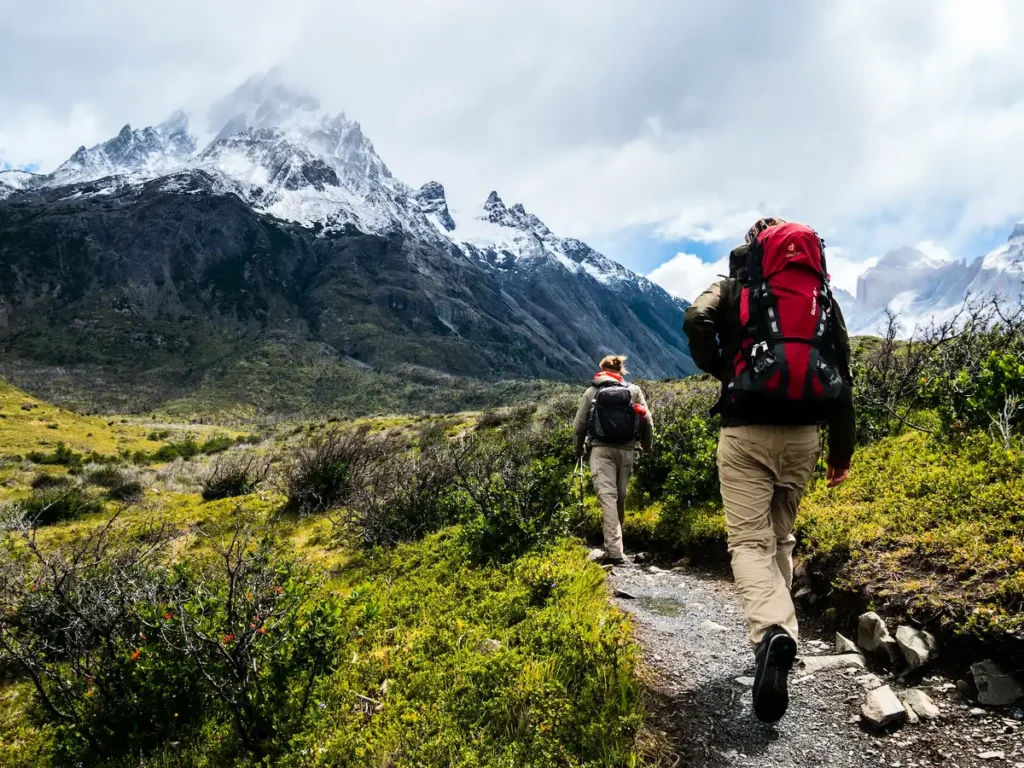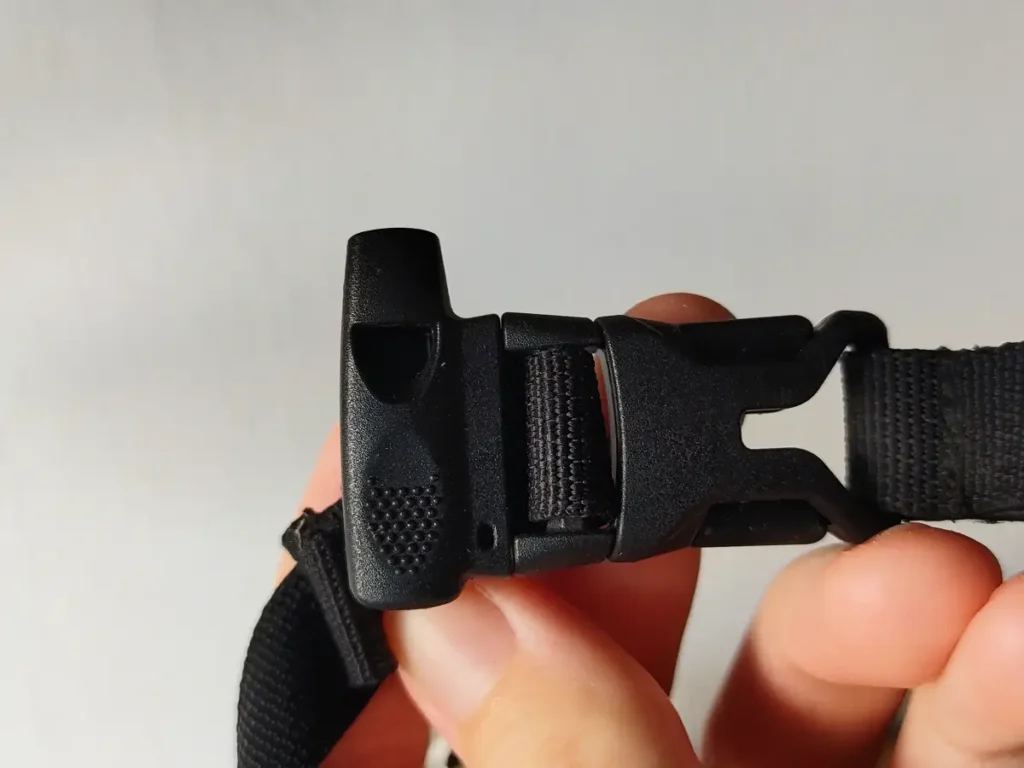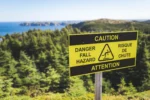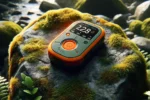Hiking safety tips
This post may contain affiliate links. This means that we may receive a small commission from purchases through those links. Read more in our affiliate disclosure.
Hiking is an exhilarating way to explore the natural world, but you still need to approach these adventures with safety in mind. Hikers face various challenges and risks, from unpredictable weather to rugged terrain. Recognizing these hazards and preparing adequately can make the difference between a memorable experience and a regrettable incident.
In this article, we’ll cover the essential safety tips that every hiker should know: Prepare for your hike by researching the trail, assembling appropriate gear (map&compass, food&water, first aid kit), checking the weather, and informing someone of you plans. On the trail, make sure to stay hydrated, navigate safely (stay on marked paths), and deal skillfully with wildlife encounters.

Many of these tips have kept me safe on my own adventures. Read on to ensure you’ll know how to react when the trail throws trouble your way!
- Introduction
- Essential Preparations Before Hiking
- Research the Trail
- Check the Weather Forecast
- Inform Someone About Your Hike
- Plan According to Your Abilities
- Essential Gear and Clothing
- Carry the Ten Essentials
- Navigation Tools
- Sunglasses and Sun Protection
- Dress in Layers to adjust to variable weather
- Appropriate Footwear
- First Aid Kit
- Safety Practices on trail
- Stay Hydrated and Nourished
- Follow Marked Trails
- Stay Aware of your Surroundings
- Understand Local Wildlife
- Use Trekking Poles for Stability
- Emergency Preparedness and Response
- Basic First Aid Skills
- Handle Wildlife Encounters safely
- Navigational Skills in Case of Getting Lost
- Emergency Signaling
- Other Considerations and Tips
- High Altitude Hiking
- How to Cross Water Safely
- Dealing with Insects and Ticks
- Understand and Prepar for Local Weather Patterns
- Conclusion
Essential Preparations Before Hiking
When planning a hiking trip, thorough preparation is crucial for ensuring safety and enjoyment. Let’s delve into the essential steps you need to take before setting foot on the trail.
Research the Trail
Understanding the trail conditions and difficulty level is vital. Start by researching your chosen trail online, looking for recent reviews or updates from other hikers. Recent photos on Google Maps can be a good indication of the conditions.
Check if the trail is suitable for your experience level – is it a gentle walk or a steep climb? Take into account trail length, elevation gain, and any unique challenges like river crossings or rocky terrains. National park websites, hiking forums, and apps like AllTrails are excellent resources.
Based on these data, you can estimate how long the hike will take you; for example, using our science-based hiking time calculator.
Check the Weather Forecast
Weather plays a significant role in hiking safety. Before you go, check the local weather forecast, including any alerts for extreme conditions like storms, heatwaves, or heavy snowfall.
Weather can change rapidly, especially in mountainous areas, so it’s wise to prepare for various conditions. If rain is possible, ensure you have waterproof gear; if it’s going to be sunny, pack sun protection.
It is beneficial to have a weather app installed in order to check for updates while already on the trail. Adjust your plans if the weather seems too risky – it’s better to be safe than sorry.

Inform Someone About Your Hike
Always share your hiking plan and schedule with someone you trust. This should include your trail name, expected start and finish times, and any planned stops. In case of an emergency, this information could be vital for rescue teams. It’s a simple step that could be life-saving.
Don’t forget to let this person know when you’re back safely!
Plan According to Your Abilities
Select trails that align with your fitness and experience level. Overestimating your capabilities can lead to exhaustion, injury, or getting lost. If you’re new to hiking, start with shorter, less challenging trails and gradually build up. Consider factors like elevation gain, terrain type, and distance. If hiking with a group, plan for the least experienced member.
Essential Gear and Clothing
The right gear and clothing are indispensable for a safe and comfortable hiking experience.
Carry the Ten Essentials
The “Ten Essentials” for hiking is a list of items recommended for safe travel in the outdoors:
- Navigation (map and compass)
- Sun protection (sunglasses and sunscreen)
- Insulation (extra clothing)
- Illumination (headlamp/flashlight)
- First-aid supplies
- Fire (waterproof matches/lighter/candle)
- Repair kit, knife and tools
- Nutrition (extra food)
- Hydration (extra water or water filter)
- Emergency shelter (bivy/hammock&tarp/garbage bag)
Adapt this list to the your hike – e.g. for a short day hike, bringing a shelter is overkill. Let’s look at some of these in detail:
Navigation Tools
Even on well-marked trails, it’s wise to carry a map and compass or a GPS device. Familiarize yourself with their use before your hike. GPS devices are handy, but they can fail, so don’t rely solely on technology. A physical map and compass are fail-safe navigational tools that don’t require batteries or signal.
You can bring a tiny, very lightweight compass; there are compasses as small as a thumbnail. These aren’t quite as exact, but you’re still much better off walking in approximately the right direction than having no direction at all. If you do not bring a physical map, commit the rough layout of the area to memory. (E.g. “If I walk north, I will eventually hit a river, follow that downstream, there’s the town.“)
Sunglasses and Sun Protection
Protecting against UV rays is crucial, especially at higher altitudes where the sun is more intense. Wear sunglasses with UV protection and apply broad-spectrum sunscreen.
Consider a hat with a brim to shield your face and neck. However, when walking through dense forest with potential fallen tree trunks and branches at eye level, a hat might obscure your vision of these obstacles; in these cases opt for a buff instead.
Dress in Layers to adjust to variable weather
The key to dressing for a hike is layering. Start with a moisture-wicking base layer to keep sweat away from your skin. Add an insulating layer, like fleece, for warmth, and top it off with a waterproof and windproof outer layer. This system allows you to adapt to changing weather conditions easily. Also, consider quick-drying fabrics, as they’re more comfortable if you get wet from rain or sweat.
Side note – fleece can absorb lots of water and loses all warming capabilities when wet; only use it if you also have a good waterproof layer. Merino wool insulating layers are somewhat more forgiving of getting wet.
Appropriate Footwear
Footwear is arguably the most crucial piece of hiking equipment. Choose boots or shoes or even sandals suitable for the terrain and conditions you’ll encounter. Look for footwear that provides support, traction, and comfort, according to your ability levels. For rocky, uneven trails, sturdy boots with ankle support are preferable, especially if you’re a beginner. In wet conditions, waterproof shoes are a must. Always break in new hiking boots before a long trip to avoid blisters.
First Aid Kit
A well-stocked first aid kit is a non-negotiable item. Your kit should include basics like bandages, antiseptic wipes, blister treatments, an emergency whistle, an emergency blanket, and any personal medications. In some regions like Australia, bring a snake bite bandage. Knowledge of how to use these items is just as important as having them, so consider taking a basic first aid course. A compact, lightweight kit is ideal, as it won’t add much weight to your pack.
Safety Practices on trail
Let’s look at the essential safety practices to follow while hiking.
Stay Hydrated and Nourished
Carrying sufficient water and high-energy foods is crucial for a safe hike. Dehydration and low energy levels can lead to fatigue, disorientation, and even serious health issues. The amount of water you need depends on various factors like the trail’s difficulty, weather, and your exertion level. A general rule is to drink about half a liter of water per hour of moderate activity in moderate temperatures. For food, pack nutrient-dense, lightweight options like nuts, dried fruits, granola bars, and jerky. Eating small, frequent snacks helps maintain energy levels throughout the hike.
Follow Marked Trails
Stick to designated paths. Deviating from marked trails can lead to getting lost or accidentally entering hazardous areas. Trails are marked for a reason – they guide you through the safest and most navigable paths. Off-trail hiking can also damage the environment and disturb wildlife. If you come across an unclear path, take a moment to consult your map and compass or GPS device.

Stay Aware of your Surroundings
Being observant and mindful of your surroundings enhances your safety. Watch out for tripping hazards like roots or rocks, stay aware of changing weather conditions, and take note of any wildlife activity. Listening to the sounds of nature can also alert you to potential hazards or orientation cues. Take mental note of landmarks to avoid getting lost or be able to find your way back.
Keep an eye on the cloud patterns to notice developing thunderstorms early. If you do find yourself in danger of lightning strikes, follow lightning safety practices: Immedialy descent from high places, try to get below tree line, seek shelter, stay away from water or tall objects, in the worst case crouch down with your feet close together.
Understand Local Wildlife
Familiarize yourself with the wildlife in the area you’re hiking. This includes knowing which animals you might encounter and understanding their behaviors. For instance, if you’re hiking in bear country, learn how to store food properly and what to do if you encounter a bear. Don’t feed or approach wildlife, as this can be dangerous and is often illegal.

Use Trekking Poles for Stability
Trekking poles can provide extra stability, especially on uneven or steep terrain. They help distribute your weight more evenly, reducing strain on your knees and ankles. Poles can also be helpful for testing the depth of puddles or streams before stepping in. If you’re using trekking poles, learn the proper technique to maximize their benefits.
Emergency Preparedness and Response
Responding skillfully to unexpected situations can make a significant difference in their outcome.
Basic First Aid Skills
Possessing basic first aid skills is crucial for addressing injuries or illnesses on the trail. This includes knowing how to treat common issues like cuts, sprains, blisters, and insect bites. Familiarize yourself with techniques for managing more serious conditions such as heatstroke, hypothermia, and dehydration. A basic first aid course is a valuable investment for any hiker, providing the skills to handle medical emergencies until professional help is available.
Handle Wildlife Encounters safely
Encounters with wildlife can be dangerous if not handled correctly. Learn how to safely interact with or avoid the wildlife in your area. Here are some quick guidelines:
- Bears: The big bosses of the wilderness! If you’re in bear country, carry bear spray, store food properly, and make noise while hiking to avoid surprising them. If you see a bear, don’t run; instead, back away slowly and speak calmly.
- Snakes: These slithery friends can be dangerous. Watch where you step or put your hands, especially in rocky or wooded areas. If you encounter a snake, give it space and back away slowly.
- Moose: These giants are generally peaceful but can be aggressive if provoked. Keep a safe distance, especially during mating season or if calves are present.
- Mountain Lions: Stealthy and rare to see. If you do spot one, make yourself look big, make noise, and never turn your back or run away.
- Ticks: Small but mighty in their nuisance. Wear long sleeves and pants, use insect repellent, and always check yourself for ticks after a hike.
- Insects (Bees, Wasps, Mosquitoes): These can range from annoying to dangerous if you’re allergic. Use insect repellent and be mindful of where you’re stepping or reaching.
- Wild Boars: Uncommon but potentially dangerous. If you see one, don’t approach and try to move away quietly.
- Deer: Generally harmless, but be cautious during the rutting season as males can be aggressive. If a deer walks towards you with slowly swaying antlers, it’s about to attack – run behind and obstacle.
- Raccoons: Cute but can be a nuisance around campsites. Secure your food to avoid attracting them.
- Porcupines: Their quills are a painful problem if you get too close. Give them space and watch your step at night.
In general, if you do encounter wildlife, remain calm, give the animal space, and slowly back away – don’t run, it will make you look like prey. Never approach or attempt to feed wild animals.
Navigational Skills in Case of Getting Lost
Even with proper preparation, getting lost is a possibility. This is where your navigational skills become essential. Learn how to use a map and compass, and familiarize yourself with GPS technology. If you find yourself disoriented, stay calm.
Use the navigational tools at your disposal to attempt to retrace your steps: Ideally, you’d have a compass and map; but the positions of sun, moon or stars can help you orient yourself.
If you’re still lost, stay put to make it easier for rescuers to find you. It’s also helpful to carry a whistle or mirror for signaling. Maybe the front buckle of your backpack even has a whistle!

Emergency Signaling
Knowing how to signal for help is an important skill. In addition to a whistle and mirror, consider carrying a personal locator beacon (PLB) or a satellite messenger. These devices can send distress signals to search and rescue teams, providing your location. Flares can also be useful, but they should be used responsibly due to the risk of starting a fire.
Other Considerations and Tips
Hiking often involves unique challenges depending on the environment and conditions.
High Altitude Hiking
When hiking at high altitudes, you face unique challenges like thinner air and the risk of altitude sickness. To manage these risks, it’s important to acclimate properly. Spend a few days at a moderate altitude before ascending higher. Recognize symptoms of altitude sickness, which include headache, nausea, and dizziness. If symptoms occur, descend to a lower altitude and seek medical attention if necessary. Stay well hydrated and avoid overexertion.
How to Cross Water Safely
Crossing streams or rivers can be hazardous. To cross water safely, look for the shallowest and calmest crossing point. Unbuckle your backpack before crossing – it can be a lifesaver if you fall in and need to get out of your pack quickly. Use trekking poles or a sturdy stick for extra stability. Face upstream and shuffle sideways to maintain balance. Never cross fast-flowing or high water – it’s better to backtrack and find an alternative route.
Dealing with Insects and Ticks
Insect and tick bites can be more than just annoying – they can transmit diseases. Wear insect repellent, long sleeves, and pants. Wear light colors to avoid attracting mosquitos and see ticks easily. Treat clothing and gear with permethrin for added protection. After hiking, check yourself thoroughly for ticks. If you find a tick, remove it promptly with tweezers, pulling straight out. Be aware of the symptoms of tick-borne diseases like Lyme disease, and seek medical attention if symptoms develop.
Understand and Prepar for Local Weather Patterns
Local weather patterns can significantly impact your hike. Research the typical weather conditions for the area and time of year. Be prepared for sudden changes – mountain weather can be particularly unpredictable. Carry gear and clothing suitable for the worst possible conditions you might encounter. If severe weather is forecasted, consider postponing your hike. Your safety should always be the priority.

Conclusion
Hiking is an activity that offers immense rewards – breathtaking views, serene moments in nature, and a sense of accomplishment. However, these rewards come with responsibilities. As a hiker, your safety lies largely in your hands. From selecting the right trail to packing essential gear, each decision plays a role in ensuring a safe adventure. Understanding and respecting the natural environment, being prepared for emergencies, and staying informed about the specific challenges of each hike are crucial.




